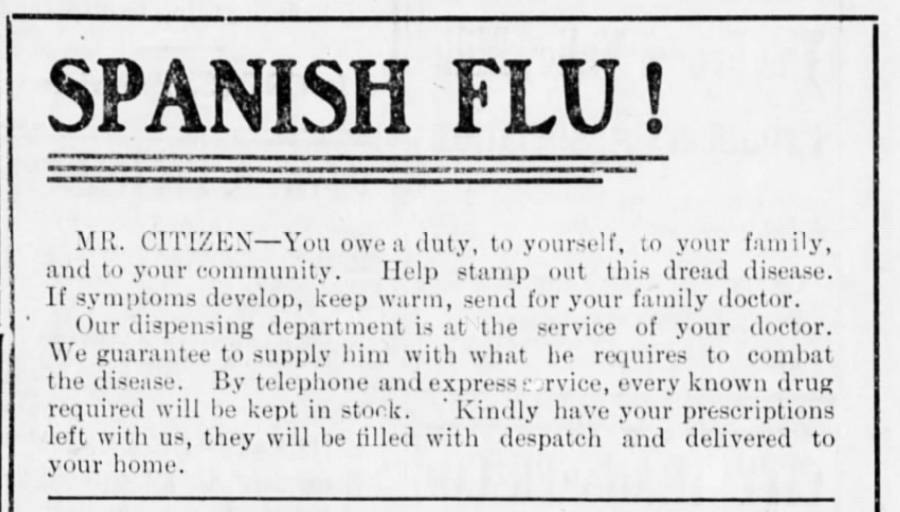Like many people in Chilliwack, I’ve been hit by the flu this winter.
It was more of a glancing blow than a full-on body slam, but it got my attention nonetheless.
And it got me thinking about how we take for granted an illness that has caused so much pain in the past.
It was 100 years ago this year that the great influenza epidemic of 1918 ripped through the world.
It seems odd to think of it now, but the disease killed nearly as many people in Canada as the previous four years of war in Europe.
Few families were spared, including my own. It claimed my great-grandparents on my mother’s side, leaving my grandfather and his Saskatchewan siblings scattered like chaff to surviving relatives.
Around the world, it’s estimated 50 to 100 million people perished – three to five per cent of the entire world’s population.
Chilliwack was not spared the calamity.
Although it did not draw the kind of attention we give it now, the threat was taken seriously. Chilliwack residents were required to report any cases of influenza to health authorities immediately. “Parties failing to report will be subject to prosecution (with heavy penalties attached), which will be rigidly enforced,” reported the Chilliwack Progress in October of 1918.
“In case of death, interment is called for within 24 hours.”
If that sounds severe it’s because authorities understood they were dealing with a crisis. Although the impact of the epidemic was down-played for a public still in the throes of the most devastating war the world had yet seen, the medical community knew better. The numbers were deliberately downplayed in countries still fighting for fear the reality would damage morale. (Spain wasn’t involved in the conflict so censorship was not so tight. Consequently, reporting gave the impression that there were more cases in Spain, thus christening the disease the “Spanish Influenza.”)
The impact of the epidemic was evident everywhere. Progress pages were peppered with references to people either ill, or who had died. Alice Mills, for example, was a 24-year-old young woman with family in Rosedale. “Miss Mills contracted influenza while assisting in an emergency hospital in Tacoma, death being caused by pneumonia which followed,” the paper reported.
In late October, the Chilliwack Board of Health ordered the closure of all schools, churches, theatres, poolrooms and public auctions. “All public meetings are forbidden until further notice,” it said.
Enterprising business people didn’t miss the opportunity. “Wet feet cause Spanish Influenza,” pronounced an advertisement for rubber boots.
H.J. Barber, “Druggist and Stationer” offered more. “For prevention, physicians and health boards recommend the free use of disinfectants,” the company’s advertisement read. “Also, ‘The Protector,’ a small bag containing antiseptics to be suspended over chest. 25 cents each.”
Flu pandemics have come and gone during the intervening century, but none as severe as the one in 1918.
Still, the disease claims roughly 500,000 lives a year globally. Experts tell us another pandemic is never far away – a reminder that an illness so many of us see as inconvenient, still packs a potentially devastating risk.
